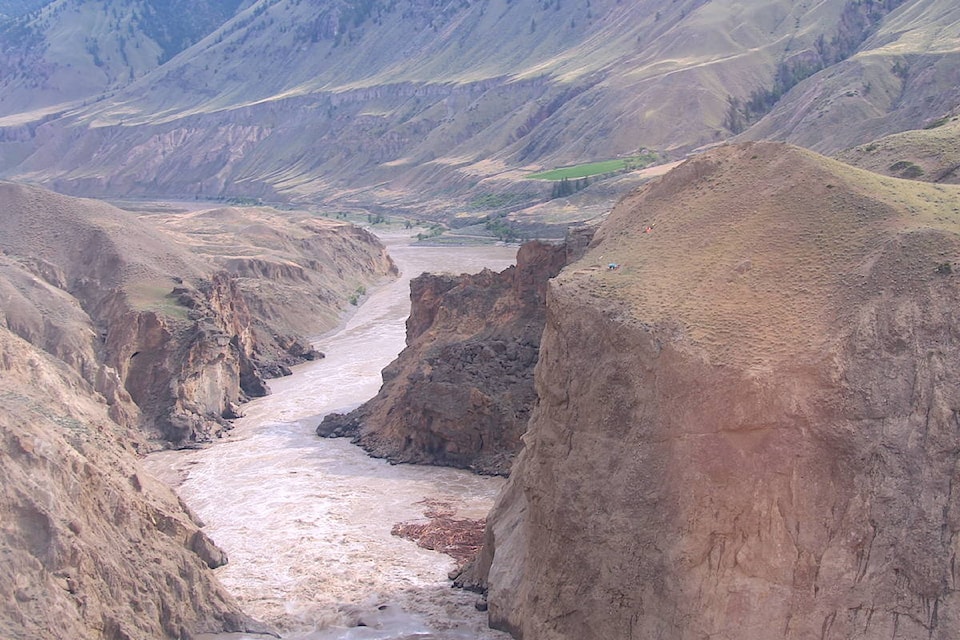About 56,000 fish have made it past a disastrous landslide in the Fraser River as crews continue to work to clear debris and find other ways to transport salmon to their spawning grounds.
The slide near Big Bar in the Interior was found in late June and federal, provincial and First Nations officials have been working to reduce the harm to the river’s significant salmon runs, at a shared cost of $6 million so far.
Michael Crowe of the Department of Fisheries and Oceans says 12,000 salmon made it upstream through channels created by rock manipulation and blasting, while 44,000 have been transported by helicopter.
Crowe, who is the environmental unit leader for the slide response team, says the majority of the salmon moved by air are sockeye, while the remainder are chinook and only a handful are pink and coho.
He says muddy water and fish movement make it difficult to estimate how many salmon are trapped downstream from the slide, but government officials have previously said millions typically arrive at this time of year.
Crowe adds the work to clear rock is dynamic and crews are also installing a fish ladder and exploring opportunities to move salmon by truck following efforts to improve what was a “very rough road” in the remote area.
RELATED: Officials consider building road to transport fish around Big Bar slide
“Nothing is off the table unless it’s determined as not being feasible. We are looking at any and all options,” he told a conference call with reporters Wednesday.
Crews are radio-tagging fish regularly and so far, 276 sockeye, 162 chinook and five pink salmon have been tagged. While 17 radio-tagged chinook have made it through the slide on their own, no tagged sockeye have passed through, Crowe says.
He says the work to create channels is challenging because it’s impossible to plan long-term as moving one rock could trigger other rocks to tumble and settle in an unexpected place.
The narrow opening at the slide site, the intensity of the water flow and weather conditions have all affected operations, says Kevin Skrepnek, the lead for the joint information centre that has been set up in Lillooet.
Nearly 180 personnel are working “tirelessly” to help the salmon, assisted by four helicopters, numerous boats, dozens of ground vehicles and heavy equipment, he says.
First Nations voices, perspectives and protocols have been embedded in the unified response to the landslide, says Dianne Garner, First Nations incident commander with the response team.
“Salmon have been at the heart of the First Nations culture for time immemorial and have been and must be at the heart of the response,” she says.
The Canadian Press
